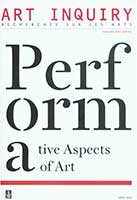Citing gender. The relationship between dress and gender identity
Citing gender. The relationship between dress and gender identity
Author(s): Magdalena SamborskaSubject(s): Fine Arts / Performing Arts
Published by: Łódzkie Towarzystwo Naukowe
Keywords: gender performativity; identity; fashion; dress-sculpture
Summary/Abstract: The idea of the performative nature of gender identity formulated by Judith Butler has been used in this article to analyze the practices relating to dress. In the first part I am referring to the history of fashion and the gender codes it establishes. Dress often accentuates, highlights, or even constructs gender asymmetry, which is then sanctioned by moral, religious or legal principles. Assigning trousers to men and dresses to women defined the different ways in which they function in life: the freedom or restriction of movement. Gender-marked garments have enforced the behavior consistent with the ones recognized as natural for women or men. In the 20th century, the boundaries between the genders became blurred. The third sex – the object of artistic experiments by Duchamp and Claude Cahun – has become the most fashionable form of subjectivity, both in fashion and in life. The second part of the text is a discussion of selected dress-sculptures, in which artists use existing gender codes to form narratives about sexual ambivalence, gender identity as a masquerade or an entity of a processual nature.
Journal: Art Inquiry
- Issue Year: 2012
- Issue No: 14
- Page Range: 269-281
- Page Count: 13
- Language: English

